Hawaii: The definition of paradise
With an exotic aloha spirit, a rich and fascinating native culture, and dramatic landscapes, the Pacific islands of Hawaii easily fit the definition of paradise, and for many people they fall into the travel category of a “once in a lifetime” destination.
Luckily, travelers exploring the globe on a round the world ticket often have the opportunity to add Hawaii to their itinerary for little or no extra cost, providing the chance to visit a part of the world that many people only ever dream of seeing.
Hawaii for backpackers

The downside is that attached to the label of paradise often comes the obvious companions of honeymooners, glitzy resorts, and the necessity of a brimming budget…or so it is assumed. The reality is that while Hawaii is likely to be one of the most expensive places you will visit on your round the world trip, there are decent hostels/camping, fair transport options, very reasonable inter-island flights, and plenty of activities beyond the “beach-buffet-bed” routine of a resort based break, so there is definitely a place in paradise for backpackers.
Making the most of your time in Hawaii
“The best thing to do in Hawaii is leave Oahu because all of the good stuff is elsewhere.” It was advice I received from a friend who’d been to the islands on her round the world trip, and it turned out to be the best tip I received.
[social]
While most travelers jump at the chance to add Hawaii to their RTW ticket, many will land in Honolulu (the main international airport on Oahu) and go no further than the 20-minute ride to Waikiki, where they will enjoy a 2-week beach break en route to somewhere else. It’s a tempting proposition, and without really understanding what the different Hawaiian Islands have on offer, the lure of Waikiki can easily see you leaving paradise with little more than a tan. And that is a shame as Hawaii has so much more to give.
With an incredibly diverse range of landscapes from alpine zones, arid desert, rainforests, volcanoes, canyons, beaches and rivers, Hawaii crams an impressively broad spectrum of the natural wonders that many of us travel the world to see into a very small space. However, in order to explore Hawaii fully, it is necessary to take in the sights of the other islands.
Before you leave Oahu
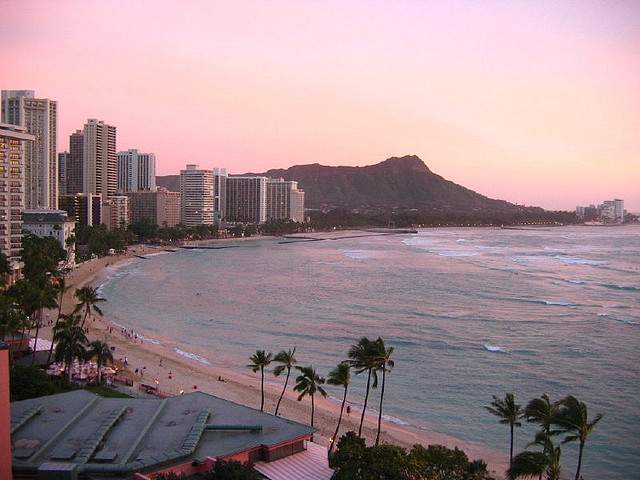
It would be unfair to dismiss Oahu entirely – Waikiki Beach alone commands a visit. However, within a few days it’s easily possible to take in the main attractions of the island before moving on.
If you want to make the most out of your time in Oahu, here are some of the top attractions:
Waikiki Beach
Iconic, internationally renowned and crammed to the water’s edge, Waikiki tops most people’s itineraries, and the sunsets alone draw crowds that feel compelled to clap as the sun dips over the horizon. Equally, taking a surf lesson on Waikiki is a stand-out activity. However, with sun loungers packed in so expertly as to make some hostel dorms seem spacious, you’re better waiting until Kauai (or any other patch of sand) for placid beach time.
Diamond Head
The hike up to Diamond Head, the landmark that is ever visible from Waikiki, is a leisurely jaunt (no more than 2 hours) that will happily fill a morning, help burn off some loco moco (a local dish of rice, burger, gravy, and a fried eggs) and provides increasingly impressive views as you climb 175 steps to the top.
Pearl Harbor
Visiting the site where the Imperial Japanese Navy launched a surprise attack on the U.S. naval base at Pearl Harbor hardly rates among the light and breezy experiences in Hawaii, but the historical significance of the event makes Pearl Harbor worth a visit. There are a number of paid entry sights, and a discount can be obtained if you visit all of them. Pearl Harbor can be reached by local bus from Waikiki.
North Shore
To watch the pro-surfers perfect their game, head to Oahu’s north shore (the island bus will take you there if you don’t have a car, but start early as it’s a long route, taking over 2 hours each way). Once you’re green with envy at the locals’ surf skills, head to one of the shrimp shacks for a taste of paradise. If you’re looking for a once in a lifetime adrenaline kick, North Shore is a good place to skydive. Most companies include a pick up from your Waikiki hostel.
Leaving Oahu: Seeing the other islands
Hawaii comprises a number of islands with Oahu, Hawaii Island (known as Big Island), Maui, and Kauai being the main four to visit. With a couple of days spent acclimatizing to the pace of paradise and seeing the sights of Oahu, a short flight will take you to the other islands, where your discovery of Hawaii can really start.
Big Island
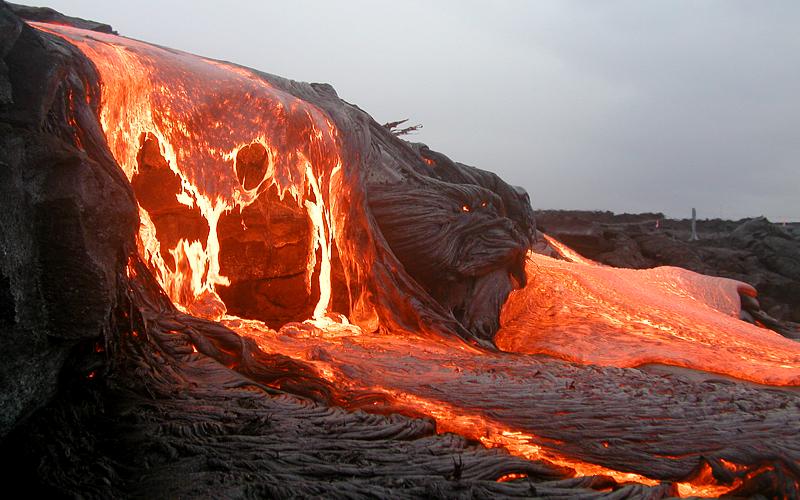
Picking a favorite Hawaiian island will come down to personal preference and what activities you prefer, but of all the islands, Big Island has something for everyone.
Volcanoes National Park: If you only have time for one activity on Big Island, then it surely has to be a visit to the Volcanoes National Park. Walk through giant lava tubes, hike into a volcano crater, take a path past steam vents, and depending on the lava flow, get to watch the eerie glow from within the crater of one of the most active volcanoes in the world (Kileau). Note: if the volcano is particularly active, you can watch lava spewing from the coast into the sea as new land is born.
Green sand beach: I never tire of seeing gleaming white sand beaches, but they barely compare with the rarity of the olive-toned green sand beach on Big Island. One of only two in the world (the other is in the Galapagos Islands), the green sand is colored by a local mineral, olivine. The miniscule beach requires an adventurous spirit to get to, including a coastal hike and bit of rock climbing, but its uniqueness makes it worthwhile. Taking sand off the beach is prohibited, and even if the potential fine doesn’t deter you, hopefully your conscience will.
Star-gaze up Mauna Kea: The peak of Mauna Kea is so perfectly positioned for star gazing that N.A.S.A. houses telescopes there. Every night a team of experts gather to provide free star-gazing sessions, which are fascinating even if you can’t tell Orion’s Belt from the Milky Way. Wrap up warm – the altitude provides freezing conditions.
Kona coffee plantations and the Kona brewery: Not every day on Big Island needs to revolve around activities and natural wonders. Hawaii produces impressive coffee, and the town of Kona, on Big Island’s west coast, is the source. There are many plantations to choose from, but the tour at the Hula Daddy plantation is both inviting, informative, and best of all, free (many plantations charge). If coffee isn’t your thing, the Kona Brewery, which produces popular brands Longboard, Pipeline Porter, and Five Rock Pale Ale, is a nice way to top off a day. Don’t fancy the tour but just want to taste? The small bar/restaurant offers a tasting menu where you can sample a selection of the breweries products.
Tip: Hilo or Kona? One dilemma for indie travelers visiting Big Island is whether to stay on the east (Hilo) or west (Kona) coast. Hilo is known for its rain and Kona its beaches, so it may seem no contest, but after staying in both I’d recommend Hilo for its better integration with local Hawaiian life.
Kauai
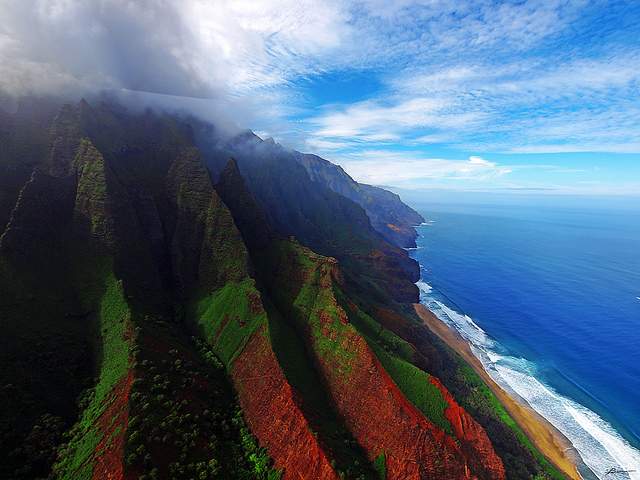
Kauai looks like an emerald green blanket has been draped over the shoulders of a giant hulk of rock that has pushed its way out of the water. The interior is no less dramatic, and the fringing beaches frame the beauty perfectly. If you’re after nature, Kauai will probably have what you’re looking for.
Waimea Canyon: Commonly dubbed the Grand Canyon of the Pacific, Waimea Canyon may be smaller than its Arizona comparator, but the swatch of rust and contrasting vivid green make it no less impressive. The gorge stretches 14-miles long, and the canyon hits 3,600 feet deep. Make sure your camera is charged because you will be clicking one shot after another.
Napli Coast: Whether you approach by foot, sea, or air, the dramatic scenery of the Napali Coast continues to drags visitors to the west side of Maui year after year. Stare in awe at impossibly thin valleys, emerald green cliff peaks that tower out of the sea, and panoramas that stretch across the Pacific. Due to its largely inaccessible nature, this part of the island remains fairly untouched, making its sights even more spectacular. It is possible to hike part of the Napali Coast, but it is not for the novice and requires camping equipment. Otherwise a boat tour will take you parallel to the staggering facia, or budget blowing helicopters will fly you overhead.
Wailua River: There are not many river-based activities in Hawaii, so the chance to explore this part of Kauai by kayak is one of island’s main attractions. Take a kayak for half a day and work your way past rock formations, waterfalls, and thick jungle on the river banks before jumping into the swimming areas for a refreshing dip.
Poipu Beach Park: Once named America’s Best Beach, Poipu is a more than another paradisiacal stretch of gleaming golden sands. Sure, lying back and taking in rays is a popular option here, but the main attraction lies beneath the surface of the water where you have the chance to spot green sea turtles and rare Hawaiian Monk Seals as well as a wealth of brightly colored fish. Snorkelling equipment is cheap and easy to hire on the island.
Maui
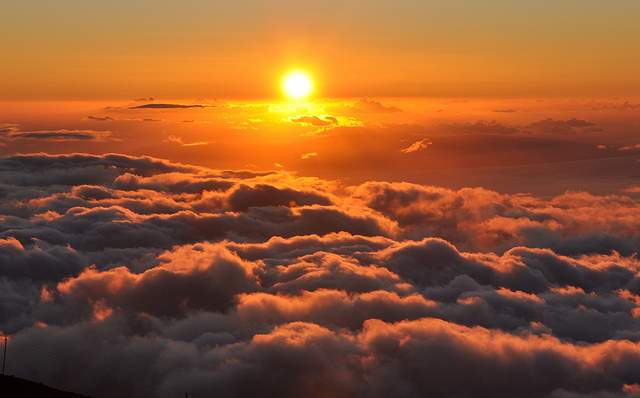
Regularly touted as Hawaii’s best island, Maui sees more than its fair share of honeymooners, who flock to the upscale resorts, but there is still plenty on offer for backpackers, even if the room and car hire rates are a little higher than the other islands.
Haleakala National Park: There is something special about watching the sun rise or set (or both) while you’re perched above the clouds, and the peak of Haleakala lets you do just that at over 10,000 feet above sea level. As well as witnessing the start and end of the day, the park has many hiking trails, including an all-day trip that will take you into the crater and past landscape that was used as a replica for Mars in the Arnold Schwarzenegger movie, Total Recall. Find yourself in the crater and you will start to wonder if there is any other place like it on earth.
Whale spotting: The old whaling town of Lahaina is as pretty as a postcard with its clapboard buildings, stunning central banyan tree (one of the largest in the USA), and shore-front location. If you’re lucky enough to visit between December and May, there is a chance you will see whales. Pacific Whale Foundation offers a good tour to search for whales in their natural habitat (it’s a not for profit business that uses ticket sales for protecting the oceans), or if you happen to be there in the peak of the season, you may catch sight of these impressive mammals from dry land.
Road to Hana: The road to Hana really is all about the journey. Consistently labelled as the world’s most scenic drive, get set for a seemingly endless series of hairpin bends as you weave along Maui’s dramatic coastal road. Waterfalls, natural pools, rainbow eucalyptus, and jungle interior will have you hitting the breaks for regular stops as will the hippie hangouts, roadside food trucks, and banana bread stalls that sell their baked goods fresh from the oven.
Practicalities
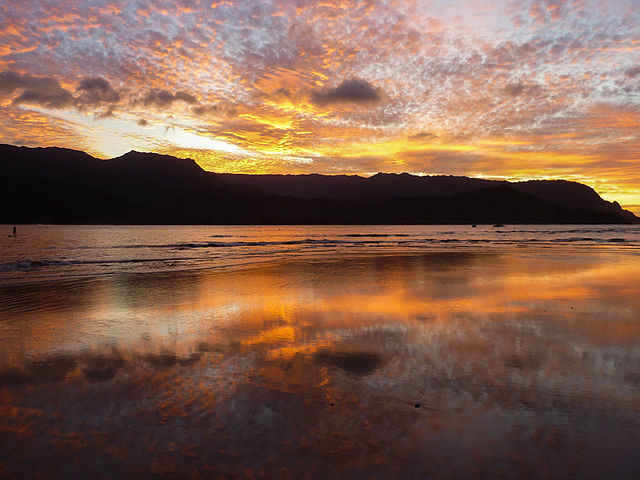
The cost of paradise
“But isn’t Hawaii really expensive?”
It was the first point my travel friends made when I declared that I was leaving budget friendly Mexico in favor of a stint in the South Pacific. Yes, is the short answer. Along with Tokyo, London, Sydney, and Tel Aviv, Hawaii is by far one of the most expensive places I’ve ever visited. However, it isn’t impossible on a budget.
Dorms cost around $30 a night, but many hostels offer free food and beer nights, and although food is otherwise impressively expensive (bread comes in around $6 from a store), if you’re prepared to dine on noodles a few times a week and eat street food/set plate meals, you can save a lot.
The best part of Hawaii is that most of the best sights are free or come at a nominal charge. For a frugal traveler staying in dorms, it is possible to get by on around $75USD a day. Less if you camp, more if you sip Mai Tais overlooking Waikiki Beach.
Inter-island travel
Sadly, there are no public ferry or boat options to help you island hop, so the only remaining way to get around is by air. The good news from a cost perspective is that flight prices are cheap – under $50 one way if you book in advance. The two main carriers are Go! and Hawaiian Airlines. The former is a low-cost airline, so usually cheaper, but Hawaiian Airlines isn’t much more expensive. Both charge for baggage, and most hostels in Oahu charge for baggage storage, so work out the cost of stowing versus paying stowed-baggage charges and factor this into your budget.
Getting around
Oahu has the best public transportation with a bus system that takes you around the island and through its center. Public buses are available on the other islands but don’t always get you to the sights that you need – for example, it is possible to get from Hilo to Kona on Big Island, but you need your own transport for Mauna Kea and green sands beach.
Car rental is the best option outside Oahu but requires some planning as prices can vary wildly depending what is going on. I witnessed prices rocketing from $25 to $125 a day when a cruise ship arrived in town. Try to book early, and on islands like Maui, be prepared for rental availability issues. The good news is that most travelers are prepared to share car rental costs, so ask around at your hostel, or rent a car and you’ll very quickly find yourself oversubscribed with new friends.
Although Hawaii was more expensive than many other places I’ve visited, the ratio of costs to attractions made it worth the expense. But if you are going all that way and have managed to get a stop in paradise included in your ticket, my recommendation is to make the most of the sights and leave Oahu behind.
Adding Hawaii to your RTW trip
If you’ve dreamed of going to Hawaii but never wanted to fork over the cash for the airfare, consider adding it to your RTW trip. There are lots of flight itineraries out there coming from or going to places like New Zealand, Australia, SE Asia, and Japan that practically fly over Hawaii and don’t add much, if any, cost to your overall flight. Here is a trip that has Hawaii in the itinerary:
In this particular route, the price (at the time of writing) is $2644USD. When I took out the stop in Hawaii, the price was only $57 cheaper, or $2587. I would say that’s worth it to add a stop in Hawaii to your longer trip.
To find routes to fit your travel needs, head over to Indie and build your trip!
For more on travel to Hawaii, check out the following articles and resources:
- Read about Flight Stopovers to find out how to add Hawaii to your flight itinerary without spending extra money
- Read Six Hawaiian Adventures Off the Beaten Path
- Read Top 5 Destinations for Volcano Enthusiasts
- Read Eat Your Way Around Honolulu
- Read 10 Reasons to Visit Hawaii Now
- Read Ten Awesome Activities in Hawaii for Kids
